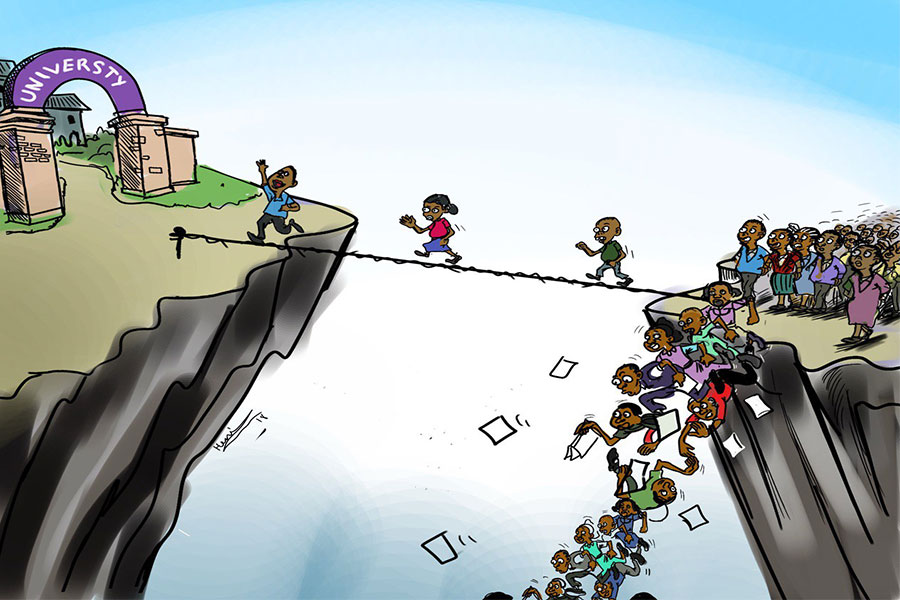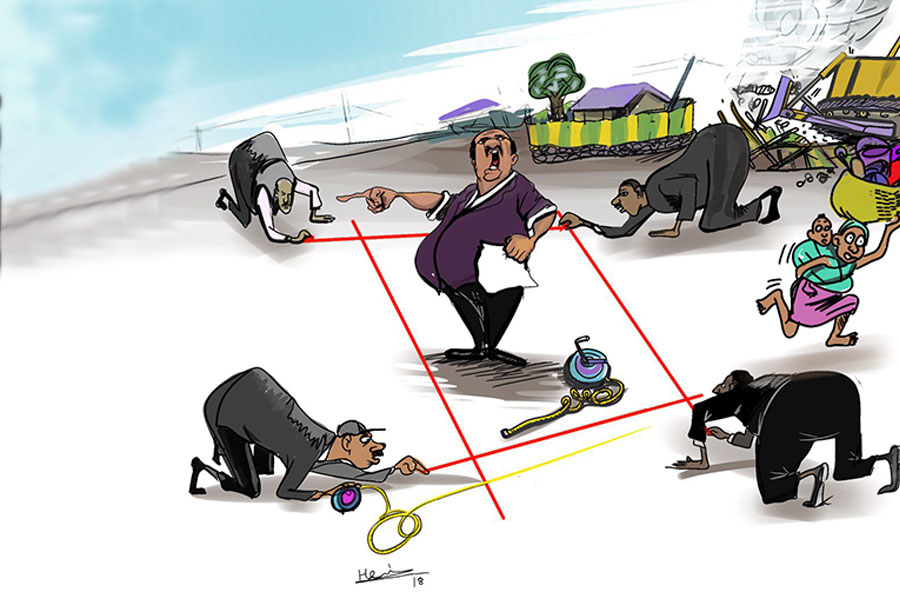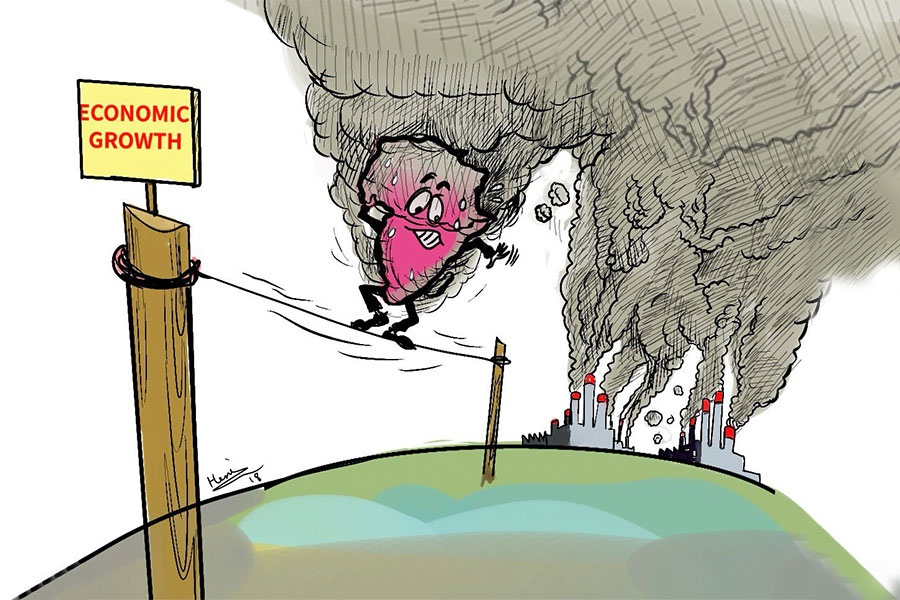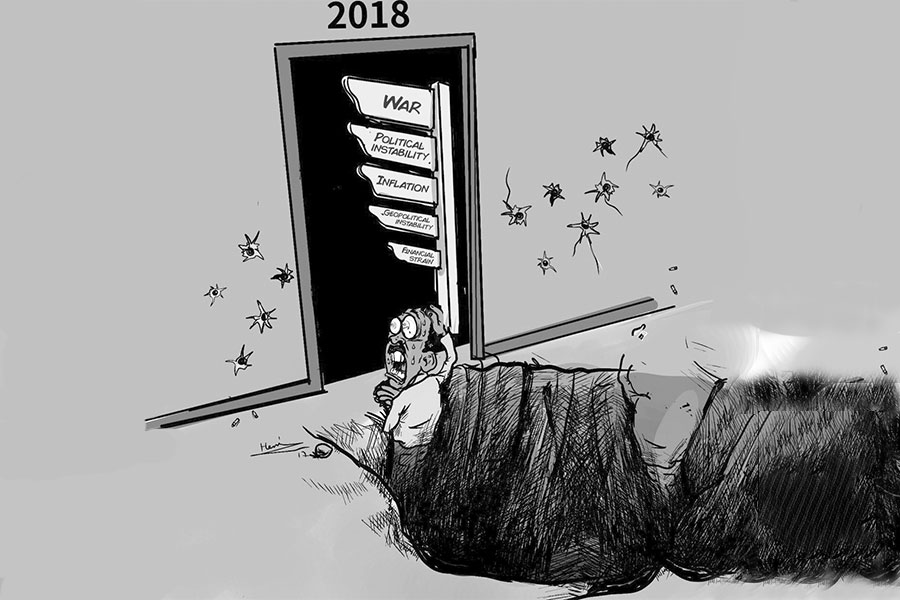
Photo Gallery | 169151 Views | May 06,2019
May 31 , 2025.
The foreign exchange market spent the final week of May in a wary holding pattern, wrestling with liquidity strain yet stopping short of outright turbulence. A handful of commercial banks broke ranks, tweaking their posted rates in ways that exposed the conflicting pressures on the Birr (Brewed Buck), caught between market reality and regulatory restraint.
The state-owned Commercial Bank of Ethiopia (CBE), usually the pace-setter, delivered the week’s biggest jolt. On Wednesday, it lifted its buying quote to 131.01 Br to the Dollar from 128.01 the day before, a jump of almost three Birr, while raising its selling rate to 133.63 Br. The roughly 2.3 percentage point move in one day was the steepest realignment among major players. It signalled either a behind-the-scenes directive from the Central Bank to narrow the gap with competitors and the parallel market.
That single adjustment pushed the Bank’s own spread slightly wider, to 2.62 Br, and elevated its week-long standard deviation to 1.55 Br on the buying side and 1.58 Br on the selling side, the highest in the market.
The Central Bank, whose reference rate averaged 133.82 Br last week, showed a different rhythm. Its buying quote edged up to 134.25 Br on Tuesday, sagged to 131.32 Br two days later, then climbed back to 133.82 Br by Friday. The swings produced a buying-rate volatility of 1.04 Br, second only to the CBE, while its selling rate varied far less, with a muted volatility of 0.37 Br. Its spread was anything but steady, ballooning to 2.81 Br on Thursday, a sign of tactical adjustments to relieve momentary pressure.
The Bank of Abyssinia formed the quiet middle, keeping its buying quote fixed at 131.95 Br and selling at 134.59 Br. It maintained a constant 2.64-Br spread, unveiling either tight internal risk limits or a decision to sit out the volatility.
Average figures masked the outliers that reveal stress points.
Global Bank (Ethiopia) clung to 128.10 Br all week on the bid side and 130.66 Br on the offer, resisting the broader upward drift. Whether due to internal rationing or a lack of hard-currency appetite, its posturing has left it firmly behind the pack. Oromia Bank went the opposite way, holding a 134.52 Br buying rate, six-and-a-half Birr higher than Global Bank and about 0.70 Br above the Central Bank’s weekend reference. Its selling quote tracked the bid so closely that arbitrage opportunities were scarce, implying compressed spreads driven by an urgency to secure dollars.
In a lone show of defiance, Hijira Bank ventured above the 132 Br threshold early in the week while its peers hesitated, perhaps to lure exporters nursing small hard-currency balances.
Across all commercial banks, the unweighted mean buying average rate settled at 131.84 Br, while the mean selling rate was 134.38 Br, resulting in an average margin of 2.54 Br. The widening gap between the commercial banks' mean and the Central Bank reference revealed a growing trust deficit. Retailers and importers view the official auction as delivering too few dollars to satisfy demand, while dealers hesitate to chase the parallel market price for fear of regulatory backlash.
The week’s internal pattern said as much as the headline numbers. The Commercial Bank’s midweek surge accounted for a +2.34pc advance on May 28 alone; after that, its quotes remained frozen. The Central Bank’s day-to-day shifts read almost like a metronome struggling to find tempo: a 0.59pc rise Tuesday, a 0.68pc slide Wednesday, a 1.52pc drop Thursday, and a 1.91pc rebound Friday. The Bank of Abyssinia barely moved, recording day-to-day changes near zero, reinforcing the view that it had opted for stability over market share.
By late Friday, the market’s centre of gravity was clear. Most banks clustered two Birr below the 133.82 Br reference, while two outliers marked opposite poles. The cautious posturing of Global Bank, anchored at 128.10 Br, spoke to either an internal forex ceiling or an acknowledgement that demand at its branch counters had dried up. Oromia Bank’s assertive 134.52 Br quote signalled the opposite, a scramble for dollars possibly linked to corporate clients front-loading payments ahead of expected import-duty adjustments.
The behaviour of banks in the weeks to come would be interesting to watch, whether the CBE repeats last week’s step or reverts to incremental changes. Should it stage another large intra-day shift, peers are likely to close ranks quickly, especially if the Central Bank widens its band. If the CBE stays flat and the auction cut-off stabilises, the entire curve may settle back into narrow ranges, giving policymakers more time to roll out a formal exchange rate road map.
For now, the Brewed Buck is being tested, not broken, as indicated by the official forex market. The average spread of roughly 2.5 Br offers a small cushion to banks juggling scattered inflows from remittances and exports against relentless demand for hard currency. The Central Bank’s willingness to absorb or inject liquidity, signalled through its daily reference, remains the decisive variable. However, anecdotes from the parallel market suggest growing impatience, with the dollar at 158 Br, 25pc above the official window, and signalling that supply is drying up even at those levels.
What unsettles bankers most is the lack of clarity. A one-time step devaluation could have closed the gap fast, but risks reigniting inflation. Gradual depreciation, as has been the case, spreads the pain but might fail to restore confidence if dollar shortages persist. In that vacuum, each bank’s daily rate card has become a tiny referendum on risk appetite. Last week, CBE voted for a recalibration, the Central Bank signalled a cautious dance, Bank of Abyssinia chose hibernation, Global Bank dug in, and Oromia Bank took a gamble on higher ground.
None of those moves broke the calm on the surface, yet together they sketch a market bracing for the next policy wave.
The coming weeks will reveal whether May’s standoff was a prelude to wider moves or merely a blip in an otherwise slow-moving depreciation cycle. For importers and exporters, as well as households tracking the value of the Brewed Buck against the Green Buck, the distinction matters less than the direction. Even subdued volatility strains balance sheets when access to dollars remains the exception rather than the rule.
Until Central Bank Governor Mamo Mihretu charts a clearer course, traders will continue to watch the rate boards each morning, looking for clues in every fractional change.
PUBLISHED ON
May 31,2025 [ VOL
26 , NO
1309]

Photo Gallery | 169151 Views | May 06,2019

Photo Gallery | 159396 Views | Apr 26,2019

Photo Gallery | 148892 Views | Oct 06,2021

My Opinion | 136158 Views | Aug 14,2021

Sep 27 , 2025
Four years into an experiment with “shock therapy” in education, the national moo...

Sep 20 , 2025
Getachew Reda's return to the national stage was always going to stir attention. Once...

Sep 13 , 2025
At its launch in Nairobi two years ago, the Africa Climate Summit was billed as the f...

Sep 6 , 2025
The dawn of a new year is more than a simple turning of the calendar. It is a moment...